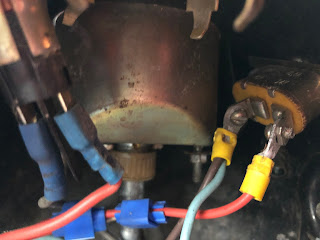Explore and discover the art within the mechanism. Each day we work with these creations and never stop appreciating their beauty! CONTACT: artinengineeringco@gmail.com
Piston Rings Cont'd
Lyon 2014 - 1000 mile road trip in Edwardian racers
Piston Ring Problems. ...Please click here to open video
Note to all customers.
Please allow a transition period as we are now hopefully approaching the closing phase of Covid 19 restrictions.
Parts suppliers and Subcontract work will begin to return to a normal service, many items that have been delayed are already becoming available. However, as a very small team, our immediate workload will increase considerably and may cause some delay for a short period as we get all of our projects up to speed simultaneously. We will work hard to avoid long delays and to maintain or return to your pre Covid schedule as soon as we are able.
Thank you for understanding and for your support and patience during this time.
Eric and Jacob.
Early spring workshop: Please click here to view
Dnepr Sidecar outfit rewire and other odds and ends!
A snippet of the Dnepr rewire that we have been carrying out, ready for it's reintroduction to the road.
This, combined with completion of some major carburettor work that had been started by a previous owner and some new spark plugs, caps and HT leads. Attention to the little platinum points contact which had come loose on the retaining rivet. She is now a "first kick starter".
From a bunch of old original wiring and newer additions which had been added via scotchblocks, we have rewired with appropriate fittings where possible. We did introduce a modern main fuse into the circuit, supported by Jacob's specially designed and 3D printed bracket, a one-off for this Dnepr.
A replacement for the missing main beam warning lens was found and located by a small 3D printed bezel.























































